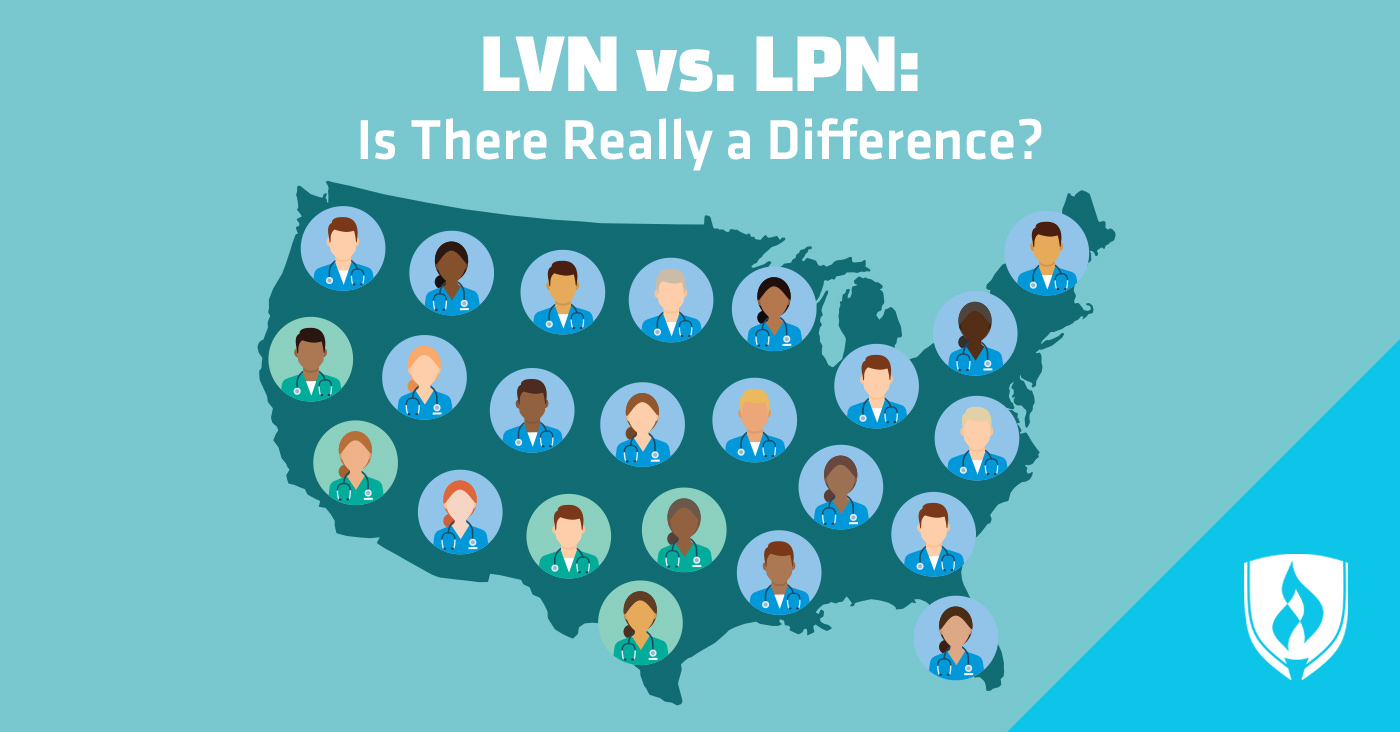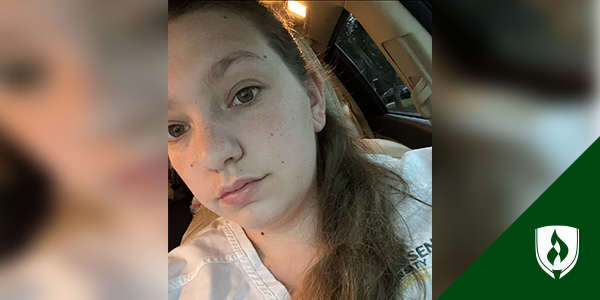
LPN, LVN, RN, BSN, MD, DPT, CNA—the healthcare field has no shortage of career-related acronyms. If you’re not already working in this industry, it can be pretty confusing trying to keep them all straight. One commonly confusing comparison is that of licensed vocational nurses (LVNs) versus licensed practical nurses (LPNs), but we’re here to help you get it straight.
Get Your Nursing School Questions Answered at a Nursing Information Session
LVN vs. LPN: What’s the difference?
The short answer to this? Not much. The differences between LPNs and LVNs essentially break down to where they practice nursing. Only California and Texas use the title LVN, while the rest of the United States uses LPN.
That being said, there may be minor differences in responsibilities from state to state regardless of LPN or LVN title distinction. Some states allow practical nurses to provide medication to patients, while others allow practical nurses to administer intravenous drips. But all LPNs and LVNs work under the supervision of RNs and physicians and have to pass the NCLEX-PN before working.
So how did this distinction begin? It is simply because nursing traditions, titles and education formed relatively independently in the U.S.—prior to the Second World War, no state provided licensure for nurses. That changed quickly after the war as states began passing legislation creating licensing bodies. During this period, Texas’ and California’s legislation used the term “vocational nursing” while others used “practical nursing.” Given the substantial population of both states, it’s easy to understand how this minor difference could make people wonder if an LVN is something entirely different—but the truth is that it really just comes down to the terms used.
With that cleared up, let’s take a closer look at this solid entry-level nursing career.
What do LPNs do?
Though minor LPN duties vary from state to state, general responsibilities include:
- Monitoring basic patient health including vital signs and overall condition
- Changing bandages or wound dressings and inserting catheters
- Taking patient histories and documenting care given
- Assisting with tests and procedures
- Providing hygiene care to patients such as bathing and going to the bathroom
- Consulting with RNs on implementing care plans
Where do LPNs work?
Though the first LPNs worked in home-care, they now can work nearly anywhere that RNs do. According to the Bureau of Labor Statistics (BLS), 38 percent of LPNs work in nursing care facilities, monitoring medication, assisting with patient personal hygiene, feeding patients and observing their overall condition, but many LPNs also work in the following settings, performing various duties:*
- Hospitals: Assist RNs and oversee nurse assistants
- Physician offices: Care for wounds, give immunizations
- Military: Enlist as medics and provide emergency care
- Rehabilitation centers: Provide therapeutic care to patients recovering from trauma, injury and illness
As you can see, there are a lot of potential settings in which LPNs can practice. But their options aren’t just based on the type of facilities—experienced LPNs also have the option to pursue travel nursing jobs. These positions are usually short-term contract roles for facilities facing a staffing crunch but offer an excellent opportunity for LPNs to see the country.
What does the future look like for LPNs?
The future looks bright for LPNs as the demand is increasing. Employment of LPNs is expected to grow by 16 percent through 2024, according to the BLS. This is more than twice the average growth rate of all occupations at seven percent.*
One of the biggest factors influencing this strong outlook for LPN employment is the aging baby boom population. This hits two ways—employers need to replace baby boomers retiring from LPN positions as they face an increase of older Americans in need of nursing care.
What traits do you need as an LPN?
If you love helping others, you may already have the characteristics that will make you successful LPN. LPNs need to be especially patient—sick people aren’t always in a great mood, after all. Organization is also important. An LPN has many duties, patients to care of and tasks to do during a shift. Being able to think logically and set priorities can help patient care go smoothly. Teamwork can also help with this—being able to help with a CNA’s duties and communicate effectively with RNs and doctors can help the whole department run well.
Is an LPN career right for you?
Now that you know the “difference” between LPNs and LVNs, what they do and where they you it, you might be curious about how to become an LPN. Becoming an LPN can be an excellent long-term career or first step into nursing, depending on your goals. It’s an excellent way to get your foot in the door of the booming healthcare industry. Plus, you get to work a day job doing what you love—helping others.
If you’d like to learn more about what it takes to become an LPN, check out our article, “How to Become an LPN: 5 Steps to Earning Your Scrubs.”
*Bureau of Labor Statistics, U.S. Department of Labor, Occupational Outlook Handbook, [information accessed November 15, 2018] www.bls.gov/ooh/.




